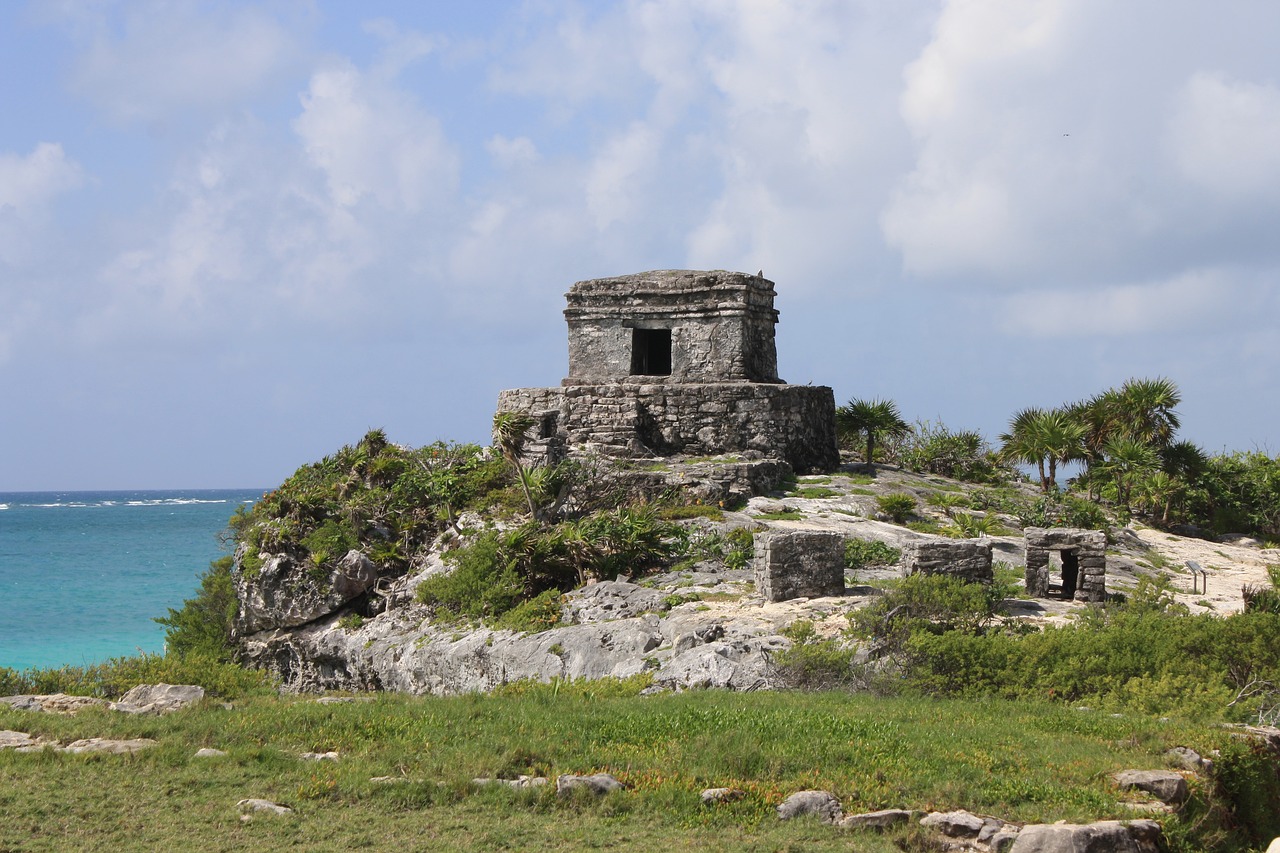Tulum Ruins: History With a View

If you’ve heard of the Riviera Maya, chances are you’ve heard of Tulum. Its ruins are the most visited in the whole of the Yucatan Peninsula, and the views of the turquoise ocean below seem to be taken right out of someone’s fantasy. Trust us—there’s a reason we named our company after this place.
Tulum’s unusual location and history
No two ways about it: the most famous feature of Tulum’s ruins is where they stand—at the edge of a 39-foot cliff, facing the Caribbean to the east—and east equals sunrise. You can bet the views from here at dawn are quite breathtaking. Sadly, it’s not open that early.
However, besides its beauty, Tulum is also historically significant. A port and a crossroads between important cities, like Coba and Chichen Itza, it was an important center of trade, distribution, and commerce. Sorry—that’s international commerce, as Central American ships docked here, too.
The ruins
You might think the sea, being so close, has wreaked havoc on the murals and paintings inside the structures, but that’s not the case for all of them. One is even called the Temple of the Frescoes, and it is home to a few of the most important murals in pre-Hispanic Mayan culture. Those in the Temple of the Descending God still keep their original pigments.
El Castillo—”the castle”—, on Tulum’s city square, perhaps is the most recognizable of all the structures. Some consider it a lighthouse, as it is the tallest building here, sits close to the edge of the cliff, and faces east, to the sea. Whenever you see a postcard or a promotional picture of Tulum, chances are it’s a picture of El Castillo.
The beach
If you’re never been here, you won’t believe the beach. It’s right under the ruins, under the cliff. And your ticket includes access to it! So, after visiting the ruins under the scorching sun, go freshen up with a dunk in the sea. We bet you can already picture the view of the ruins from down there.
